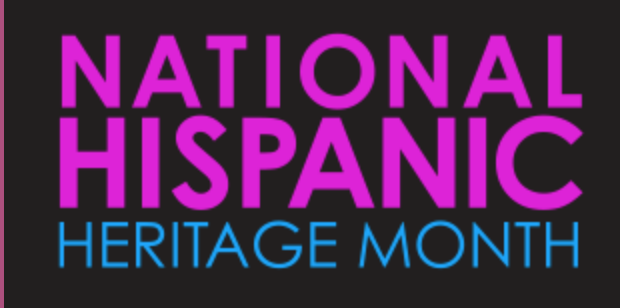September 15th to October 15th officially represents Hispanic Heritage Month or Latinx Heritage Month as it is becoming known. The celebration was initially one week and started by President Johnson to recognize the cultural contributions of Hispanic Americans. President Reagan later extended it to one month. With over 62 million people now within the U.S. identifying as part or wholly Hispanic, there could not be a better time to celebrate some of the most influential Hispanics in U.S. history. While it is impossible to pay tribute to all Latinos who have made substantial contributions, FirstLantic Healthcare wants to recognize five extraordinary people who were first in their fields and given so much to America.
Rita Moreno
Rita Moreno is the first Hispanic American woman to win an Academy Award for her performance in West Side Story. Born in Puerto Rico, Moreno moved to New York when she was five and made her Broadway debut at just 13 years old. She went on to star in numerous films, TV shows, and Broadway, paving the way for other actresses. Despite Moreno’s success in winning an Academy Award, she often dealt with discrimination in her movie career and was only asked to play stereotypical and insubstantial roles. She became so frustrated that she took a seven-year hiatus from making movies. When she eventually came back, she started taking more control of her career and acting in films to play more meaningful roles. Moreno is only the third person ever to achieve the coveted EGOT, winning an Emmy, Grammy, Oscar, and Tony Award by 1977. In 2019, she added a P to the achievement with a Peabody Award.
Cesar Chavez
Chavez was born in Arizona to a Mexican American family and is remembered for his untiring fight for workers’ rights. The Chavez family relocated to California during the Great Depression to become farmworkers. Cesar saw first-hand the way that workers were treated, and it left an indelible impression on him. Many were paid so little that they lived in tents, cars, or trucks without electricity or running water. After being honorably discharged from the Navy, Chavez began his activism shortly afterward. While working as a lumber handler, he set up a chapter of the Community Service Organization, an important civil rights organization for Latinos in California. He eventually made the CSO his full-time job and met fellow activist Dolores Huerta as he traveled to various chapters around California. The two would join forces and eventually become the founders of the National Farm Workers Association, later known as the United Farm Workers labor union. The UFW organized a nationwide boycott of table grapes that compelled the major growers to recognize the union, raise wages, contribute to workers’ welfare plans, and give workers a role in regulating pesticide use. He is remembered as one of the most important civil rights leaders and posthumously received the Presidential Medal of Freedom after his death in 1993.
Dolores Huerta
Dolores Huerta is one of the most well-known women activists of Latin heritage. She was born in New Mexico and is of Mexican descent. Her parents divorced when she was three years old, and her mother worked two jobs to support the family. Huerta’s mother moved Dolores and her two brothers to California, where she primarily grew up in a farming community. She encouraged her children to get a good education and to participate in extracurricular activities. Dolores took violin, piano, and dance lessons and was a good student. Although she started her career as an elementary school teacher after graduating college, it wasn’t long before she became an activist. Like Chavez, Huerta joined the Community Service Organization until the two eventually partnered and became founders of the National Farm Workers Association. She left the organization in 1999 but continued to fight for women’s rights after a police officer severely beat her during a peaceful protest in San Francisco. She eventually recovered, although it involved a long process. Huerta is now 90 years old and is still actively helping other people through her foundation. Her non-profit is dedicated to inspiring communities to build volunteer organizations that pursue social justice. Huerta has received numerous accolades for her activism, including an inaugural Eleanor Roosevelt Award for Human Rights in 1998 under President Clinton and the Presidential Medal of Freedom under President Obama in 2012.
Ellen Ochoa
Ochoa was the first Hispanic American woman to go to space with a nine-day mission in 1993. Born in Los Angeles to a Mexican American family, she was academically gifted, earning her physics degree from San Diego State University and her master’s and doctorate from Stanford University’s department of electrical engineering. She was selected to become an Astronaut by NASA based on her impressive research and became a mission specialist and flight engineer. Ochoa is a veteran of four space flights, logging more than 950 hours in space. She has served as Assistant for Space Station to the Chief of the Astronaut Office, lead spacecraft communicator in Mission Control, and was Acting Deputy Chief of the Astronaut Office. Ochoa later became the first Latin American director of the Johnson Space Center and only the second woman. After 30 years in her field, she retired and is now a tireless advocate for women in the STEM fields.
Sonia Sotomayor
Sotomayor is the first Hispanic American to serve as an associate justice to the U.S. Supreme Court. She was born in the Bronx and is of Puerto Rican descent. Although she was diagnosed with Type 1 diabetes when she was seven and lost her father at age 9, Sotomayor said adversity inspired her to succeed. Academically focused, she knew that she would become an attorney by the time that she was ten years old. After graduating from High School as valedictorian, she earned a full scholarship to attend Princeton University and later went to Yale Law School on a scholarship as well. She was accepted by the New York Bar the following year. Sotomayor worked as an assistant district attorney in New York and in private practice, where she specialized in intellectual property litigation, international law, and arbitration. She was nominated to the U.S. District Court for the Southern District of New York by President George H. W. Bush in 1991 and to the U.S. Court of Appeals for the Second Circuit by President Clinton in 1997. In 2009, she was selected by President Obama as his first nominee to the U.S. Supreme Court.
In summary, the five people that FirstLantic profiled have accomplished so much but have given back even more. They have dedicated themselves to setting an example for others and paving the way for other Hispanic Americans. We all owe them a debt of gratitude for their contributions. That said, we have only been able to touch the surface with these five stories, and there are so many more to tell. Fortunately, Story Corps, an American non-profit organization, continues its work to enable all Americans to tell their unique story. The stories are recorded for posterity and stored at the Library of Congress. In honor of National Hispanic Heritage Month, they highlight some of the many stories Hispanic Americans have recorded, and you can listen to them here.
To find out more about FirstLantic Healthcare services, click here
To read more FirstLantic blogs, click here
 AVAILABLE 24 HOURS A DAY/7 DAYS A WEEK
AVAILABLE 24 HOURS A DAY/7 DAYS A WEEK Careers
Careers







